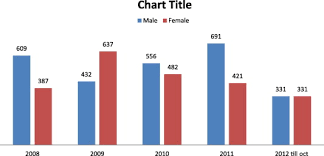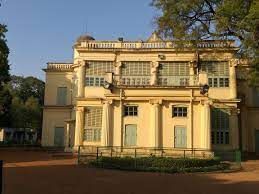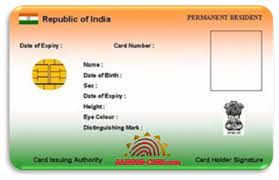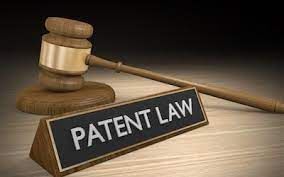UPSC Daily Current Affairs- 18th September 2023 | Current Affairs & Hindu Analysis: Daily, Weekly & Monthly PDF Download
GS-I
Suicidal Patterns in India
Subject: Social Issues

Why in News?
Recently, World Suicide Prevention Day was observed serving a sobering reminder of the persistent problem of female suicide in India, especially among housewives.
- Despite being an often-overlooked issue, housewives consistently rank among the top categories for suicide, with alarming numbers reported in recent years.
- Recent Statistics: The National Crime Records Bureau reported that housewives accounted for 51.5% of female suicides in 2021.
- Among the major states, Kerala, Tamil Nadu, Telangana, and Karnataka featured at the top of this list.
- Housewives also account for around 15% of all suicides, highlighting the magnitude of this issue.
- Limited Mobility: Many women in India face restrictions on their mobility, particularly in rural areas.
- Societal norms and safety concerns often discourage them from traveling alone or venturing far from their homes.
- This limited mobility can lead to feelings of isolation and helplessness.
- Restricted Financial Autonomy: Economic dependence on their spouses or families can make women vulnerable to various forms of abuse. Lack of financial independence limits their ability to make choices and escape abusive situations.
- Marital Control: Traditional gender roles and patriarchal norms in Indian society often result in women having little control over their lives, especially in the context of marriage.
- Expectation that women should conform to the wishes of their husbands and in-laws can lead to feelings of powerlessness.
- Physical, Sexual, and Emotional Abuse: Domestic violence, including physical, sexual, and emotional abuse, is a significant problem in India. Many women endure these forms of abuse in silence due to stigma, fear of reprisal, or lack of support systems.
- Reluctance to Seek Help: Societal stigma around discussing mental health issues and seeking help for them is widespread in India. Many women hesitate to seek external assistance or confide in others about their struggles, leading to a lack of access to mental health support.
- Agricultural Distress and Farmer Suicides: India's agrarian economy faces numerous challenges, including erratic weather patterns, land degradation, and high input costs.
- This has led to a significant number of farmer suicides due to debt burdens and crop failures.
- In rural areas of India, access to lethal means like pesticides is relatively easy, and this contributes to a higher rate of impulsive suicides.
- Educational Pressure: India's competitive education system places immense pressure on students to perform well academically.
- The fear of failure and the high expectations of parents lead to mental health issues and suicides, with students feeling they have no way out.
- Lack of Mental Health Services: Despite recent efforts to improve mental health services, there is still a shortage of mental health professionals and limited access to affordable mental healthcare, especially in rural areas.
- It amplifies the mental health crisis in India and emerges as a paramount concern linked to the rise in suicides.
- Family Pressure on LGBTQ+ Individuals: Many LGBTQIA+ individuals in India face severe discrimination and rejection from their families, leading to feelings of isolation and depression.
- The lack of acceptance and support within families is a significant factor contributing to suicides in this community.
- Cyberbullying: With the rise of technology and social media, cyberbullying has become a significant issue, particularly among young people. Online harassment and bullying can have severe consequences on mental health and lead to suicides.
- Levering AI and Innovation to Empower Housewives: There is a need to introduce AI-powered skill development and job placement programs specifically designed for housewives who wish to enter or reenter the workforce.
- AI can help identify skills and job opportunities that align with their interests and abilities.
- These programs can provide training in various fields, such as remote work, freelancing, or part-time employment, allowing housewives to gain financial independence and a sense of purpose.
- Improve Access to Mental Health Care: There is a need to increase the availability of mental health services, especially in rural and underserved areas, by building more mental health clinics and training more mental health professionals.
- There is a need to integrate mental health services into primary healthcare to ensure early detection and intervention for mental health disorders.
- Legislation and Regulation: There is a need to implement stricter regulations on the sale of pesticides, which are a common method of suicide in rural areas.
- Also, enforcing laws against cyberbullying and online harassment can contribute to reduction in mental distress among young people.
Source: The Hindu
SANTINIKETAN
Subject: Art and Culture

Why in News?
Santiniketan, a town established by Nobel laureate Rabindranath Tagore in West Bengal's Birbhum district, has been added to UNESCO's World Heritage List. This recognition highlights its cultural and historical significance on a global scale.
Details
- Foundation of Visva-Bharati University: Santiniketan is the place where Rabindranath Tagore laid the foundations of Visva-Bharati University, which is known for its unique approach to education, emphasizing art, culture, and the integration of human values.
- India's 41st World Heritage Site: Santiniketan's inclusion on the UNESCO list makes it India's 41st World Heritage Site, showcasing the rich cultural and historical diversity of the country.
- Longstanding Efforts: The efforts to have Santiniketan included in the World Heritage List date back to 2010. The recent proposal for its nomination began in the financial year 2020-21. The Archaeological Survey of India (ASI) has been actively involved in the restoration of several structures in Santiniketan in recent years.
- About
- Santiniketan is a renowned cultural and educational hub located in the Birbhum district of West Bengal, India.
- It holds a special place in Indian history and culture due to its association with Rabindranath Tagore, a Nobel laureate poet, philosopher, and polymath.
- Santiniketan translates to "Abode of Peace" and was founded by Tagore as an experiment in education and art, which continues to influence generations of artists, scholars, and thinkers.
- History:
- Santiniketan was established in 1901 when Rabindranath Tagore moved to this region, inspired by the serene and tranquil environment.
- Tagore was dissatisfied with the conventional educational system and wanted to create an institution where education would be more holistic, integrating arts, culture, and nature.
- Under his guidance, Santiniketan developed into a unique educational and cultural institution.
- Visva-Bharati University:
- In 1921, Rabindranath Tagore established Visva-Bharati University within Santiniketan.
- It aimed to promote the ideals of a universal, non-sectarian, and holistic education system.
- Visva-Bharati remains a prestigious institution known for its emphasis on the arts, literature, and social sciences.
- The university comprises various schools, including Shantiniketan (the core campus), Sriniketan (its rural reconstruction center), and several institutes and departments dedicated to diverse disciplines.
- Cultural Significance:
- Santiniketan has been a crucible for art and culture in India.
- It was instrumental in the development of the Bengal School of Art, a significant movement in Indian art. The school emphasized traditional Indian art forms, nature, and the spirit of the land.
- The annual Poush Mela and Basanta Utsav (Holi festival) celebrations at Santiniketan attract people from all over India. These events showcase the rich cultural heritage of India, with performances of music, dance, theater, and more.
- Rabindranath Tagore's residence, known as the "Rabindra Bhavan," is a major attraction in Santiniketan. His personal belongings, manuscripts, and artistic works are preserved here, allowing visitors to gain insight into his life and creative process.
- Landmarks and Attractions:
- Upasana Griha (Prayer Hall): A red-brick structure designed by Tagore himself, it's a place for meditation and prayer.
- Kala Bhavana: The art college at Visva-Bharati, it continues the legacy of the Bengal School of Art.
- Patha Bhavana: The school where Tagore's educational philosophy is put into practice.
- Sangeet Bhavana: The music school, fostering the study and practice of Indian classical music.
- Rabindra Bhavan: The museum and archive dedicated to Rabindranath Tagore.
- Khoai: A nearby natural red soil ravine offering scenic beauty.
Conclusion
Santiniketan remains an important cultural and educational center in India. It is a testament to Rabindranath Tagore's vision of a holistic education system that values art, culture, and nature. It continues to inspire students, artists, and intellectuals from all over the world, making it a place of enduring significance in Indian heritage and global culture.
Source: PIB
GS-II
Digital Birth Certificates
Subject: Polity and Governance

Why in News?
Starting from October 1, all births and deaths reported in the country will undergo digital registration through the Centre's portal. The move towards digital registration has the potential to streamline administrative processes, enhance accuracy, and facilitate various government services and transactions.
Details
- The Registration of Births and Deaths (Amendment) Act, 2023 is a significant development in India's administrative and governance framework. It aims to digitize the registration of births and deaths across the country. This initiative builds upon the existing Registration of Births and Deaths Act 1969, which mandated the registration of such vital events but did not fully leverage digital technologies.
Key Features of the initiative
Digital Registration
- The shift towards digital registration of births and deaths signifies a move away from traditional paper-based methods.
- Under this amendment, when a birth or death occurs, the relevant information will be entered into a centralized online portal maintained by the government. This portal will serve as the primary platform for recording and storing vital statistics, ensuring a more efficient and accurate registration process.
Single Digital Document
- The Digital certificate will include comprehensive information about the individual, including their name, date of birth, place of birth, parents' details, and more. It will be digitally signed and authenticated, making it a reliable and tamper-proof document.
- Citizens will be able to access and download their digital birth certificates from the portal, reducing the need for physical copies.
Multi-Purpose Usage
- Admission to Educational Institutions: Schools, colleges, and universities can accept the digital birth certificate as proof of age and identity during the admission process.
- Driving License Applications: Individuals can use the digital certificate as one of the required documents when applying for a driving license.
- Job Applications: Government agencies can accept digital birth certificates as proof of age and identity for job applications.
- Passport Applications: The certificate can be submitted as part of the documentation required for obtaining a passport.
- Aadhaar Enrollment: It can be used for enrolling in the Aadhaar system, which is crucial for accessing various government services.
- Voter Registration: It can serve as valid proof of age and identity when registering as a voter.
- Marriage Registration: Couples can present their digital birth certificates as proof of age and identity when registering their marriage.
Collection of Aadhaar Numbers
- The amendment authorizes the government to collect the Aadhaar numbers of parents and informants during the birth registration process, if available.
- This step enhances the linkage between vital records and Aadhaar, India's unique identification system. This linkage can improve the accuracy of demographic data, help prevent identity fraud, and enable better access to government services.
Centralized Database
- The establishment of the Civil Registration System (CRS) portal as a centralized database is a pivotal aspect of this amendment. All digital records of births and deaths will be stored in this secure and centralized repository.
- The database will facilitate data management, retrieval, and analysis, ensuring that government authorities have access to accurate and up-to-date vital statistics for various administrative and policy purposes.
Significance
Efficiency
- Improved Accuracy: The digital registration system enhances the accuracy of birth and death records. With manual paperwork, errors and discrepancies can occur during data entry, transcription, or storage. Digital records are less prone to such errors and can be cross-checked more easily.
- Real-time Updates: Digital registration allows for real-time updates. As soon as a birth or death is reported and registered on the portal, the information is available instantly, reducing delays and ensuring that government agencies have access to the most current data.
- Reduction in Paperwork: The shift away from physical paperwork eliminates the need for storing, handling, and processing large volumes of paper documents. This not only saves time but also reduces the administrative burden associated with managing physical records.
Streamlined Services
- Convenience for Citizens: The single digital birth certificate serves as a one-stop solution for various government services. Citizens no longer need to provide multiple documents as proof of identity and age for different transactions. This simplification makes it more convenient for individuals to access government services and reduces the paperwork they must carry.
- Faster Processing: Government agencies can process applications more quickly because they can verify an individual's identity and age with the digital birth certificate, which is readily accessible through the centralized portal. This can lead to shorter waiting times and smoother service delivery.
Data Integration
- Consistency Across Databases: The integration of the digital registration system with other critical databases, such as the National Population Register (NPR), ration cards, property registration, and electoral rolls, ensures data consistency. When individuals use their digital birth certificates for various services, it helps maintain uniformity in demographic information across different government departments.
- Preventing Duplication: Integration also helps prevent duplication and identity fraud. When data is updated in one database (e.g., birth registration), it can automatically trigger updates or checks in related databases, reducing the chances of individuals obtaining multiple benefits or identities using false information.
- Efficient Governance: For government authorities, this integrated approach streamlines data management and governance. It reduces redundancy in data collection and maintenance efforts, saving time and resources that can be better utilized for other essential tasks.
Challenges
- Data Privacy and Security: Handling sensitive personal information, such as Aadhaar numbers, raises concerns about data privacy and security. Adequate safeguards must be in place to protect this data from unauthorized access and misuse.
- Digital Divide: India has a significant digital divide, with many citizens lacking access to digital services. Ensuring that everyone can participate in this digital registration system is a challenge.
Way forward
Awareness and Outreach
- Information Campaigns: The government should launch comprehensive information campaigns across various media channels, including television, radio, newspapers, and social media. These campaigns should explain the benefits of the digital birth certificate system, how to access it, and its importance for accessing various government services.
- Community Engagement: Engage local community leaders, organizations, and influencers to disseminate information about the digital birth certificate system at the grassroots level. Community events and workshops can also be organized to address questions and concerns.
- Multilingual Content: Ensure that all communication materials are available in multiple regional languages to reach citizens in diverse linguistic regions.
Digital Literacy
- Training Programs: Collaborate with educational institutions, NGOs, and private organizations to conduct digital literacy training programs, particularly in rural and remote areas. These programs should cover basic computer skills, internet usage, and digital security.
- Mobile-Based Training: Leverage the widespread availability of mobile phones to deliver digital literacy content through mobile apps and SMS services.
- Local Digital Centers: Establish digital literacy centres in rural areas where citizens can access computers and receive hands-on training. Trained instructors can provide guidance and support.
Data Protection
- Legal Framework: Strengthen data protection laws and regulations to provide a clear legal framework for handling sensitive personal information. Ensure compliance with existing laws such as the Personal Data Protection Bill (PDPB) or any other relevant legislation.
- Privacy by Design: Integrate privacy considerations into the design of the digital birth certificate system. Implement privacy-enhancing technologies like differential privacy to protect individual data.
- Regular Audits: Conduct regular security audits, vulnerability assessments, and penetration tests to identify and address security weaknesses. Third-party audits can provide an unbiased evaluation of the system's security.
Continuous Improvement
- Feedback Mechanism: Establish a feedback mechanism for citizens to report issues, provide suggestions, and seek assistance. This can include a dedicated helpline, online forms, or mobile apps.
- Monitoring and Evaluation: Continuously monitor the performance of the digital birth certificate system, including uptime, user satisfaction, and security incidents. Use this data to make necessary improvements.
- Scalability: Design the system with scalability in mind to accommodate the increasing number of registrations and digital service users. Regularly update and upgrade infrastructure to meet growing demands.
- User Experience Enhancement: Regularly gather user feedback to improve the user interface and overall user experience. This ensures that the system remains user-friendly and accessible.
Source: The Hindu
DRAFT PATENTS (AMENDMENT) RULES 2023
Subject: Polity

Why in News?
Patient advocacy groups have expressed serious concerns regarding the draft Patents (Amendment) Rules 2023, stating that these proposed changes could undermine crucial public health safeguards, including provisions such as pre-grant opposition and the working of patents. The draft rules were released for stakeholder comments by the Department for Promotion of Industry and Internal Trade last month.
Key concerns raised by these advocacy groups
Dynamic and Exorbitant Fees for Pre-Grant Opposition
- The proposed amendments introduce fees for filing pre-grant oppositions, which is a departure from the current practice of not charging any fees for such filings.
- Advocacy groups argue that this could deter patient groups and other stakeholders from providing critical information to the patent office, potentially limiting the examination of patent applications.
Loss of Access to Peer Reviews
- Pre-grant opposition is equated to "peer reviews" in scientific circles, allowing stakeholders to review patent applications and oppose frivolous ones. Introducing fees for this process could make it inaccessible to patient groups and other organizations, limiting their ability to participate in the examination of patents.
Delaying the Patent Process
- Advocacy groups counter the argument that pre-grant oppositions cause delays by pointing out that a very small percentage of patent applications have faced opposition since the relevant Act was amended in 2005. They argue that these oppositions play a crucial role in ensuring the quality and validity of patents.
Significant Challenge to the Indian Patent System
- The proposed amendments are seen as the most significant challenge to the Indian Patent System since 2005. Advocacy groups believe that these changes could have a disastrous impact on access to medicines and are concerned that they are being introduced through less conspicuous means, such as rule changes.
Financial Burden on Marginalized Patients
- The introduction of fees for pre-grant oppositions could place a financial burden on marginalized patients and patient advocacy groups. Instead of focusing on allocating resources to treat patients, these groups might have to divert funds toward filing patent challenges.
Discretionary Authority of the Controller
- The discretionary authority given to the Controller to determine the "maintainability" of pre-grant oppositions is a concern, as it could lead to delays in the patent process. Those dissatisfied with the Controller's decision may resort to legal actions, further extending the process.
Changes in "Working of the Patent" Requirements
- The requirement for companies to provide details on the annual sale of their patented drugs has been changed from yearly to three-yearly information. Advocacy groups argue that this change could hinder the process of obtaining compulsory licenses and making essential medicines available at an affordable price.
Source: The Hindu
Supreme Court’s Integration with the National Judicial Data Grid
Subject: Polity and Governance

Why in News?
On September 14th, the Supreme Court of India took a monumental stride by incorporating its case data into the National Judicial Data Grid (NJDG).
What is the National Judicial Data Grid (NJDG)?
- Comprehensive Repository: NJDG stands as a comprehensive online repository, housing orders, judgments, and case particulars from a vast network of 18,735 District and subordinate Courts and High Courts.
- Real-time Access: This platform is an integral component of the eCourts Project, providing real-time updates and in-depth data down to the Taluka level.
Administration of NJDG
- E-Courts Initiative: NJDG was conceived as part of Phase II of the e-Courts project, a Centrally Sponsored Scheme designed to modernize the Indian judiciary.
- Collaborative Effort: The National Informatics Centre (NIC) collaborated closely with the in-house software development team of the Computer Cell at the Supreme Court to bring NJDG to fruition.
- User-Friendly Interface: NJDG boasts an interactive interface and an analytics dashboard, ensuring accessibility for legal professionals and the general public.
The Power of Data
- Monitoring and Management: NJDG serves as a potent tool for monitoring and managing case backlogs, ultimately alleviating the burden of pending cases.
- Supreme Court’s Example: Analyzing data from the Supreme Court in 2023, it reveals a total pendency of 64,854 registered cases, with 5,412 new cases received and 5,033 cases disposed of in the last month. This underscores that the backlog primarily consists of legacy cases, managed at a rate comparable to the annual influx of new cases.
- Identifying Bottlenecks: NJDG aids in identifying specific bottlenecks in the judicial process. For instance, a surge in land dispute cases in a particular state prompts policymakers to consider strengthening relevant laws.
- Insights from the Chief Justice: Chief Justice Chandrachud noted that year-wise pendency data indicates the Supreme Court has less than a hundred cases pending from before 2000, allowing the Chief Justice to prioritize the resolution of the oldest cases.
- Specialized Insights: NJDG also facilitates the generation of insights into specific areas of law. For instance, it links Land Records data from 26 States with NJDG to track land dispute cases effectively.
Source: Indian Express
GS-III
Liptako-Gourma Charter
Subject: Defence

Why in News?
Military leaders from Mali, Burkina Faso, and Niger signed a significant mutual defense pact known as the Liptako-Gourma Charter, marking a crucial step in addressing the security challenges plaguing the Sahel region.
Liptako-Gourma Charter
- This pact establishes the Alliance of Sahel States (AES) and aims to create a framework for collective defense and mutual assistance among these nations.
- The Liptako-Gourma region, where the borders of Mali, Burkina Faso, and Niger converge, has been severely affected by jihadist activities and instability in recent years.
- The AES seeks to combine military and economic efforts to confront common security threats and advance the well-being of their populations.
Liptako-Gourma Charter: Key Provisions
- Mutual Assistance: The charter binds signatory nations to provide mutual assistance, including military support, in the event of an attack on any one of them.
- Security Restoration: It specifically allows the use of armed force to restore and ensure security in the face of aggression.
- Rebellion Prevention: The agreement also commits the 3 countries to collaborate on preventing or resolving armed rebellions within their borders.
Need for such alliance
- Shared Objective: The primary focus of the alliance is to combat terrorism within the three member countries.
- Jihadist Insurgency: The Sahel region has grappled with a jihadist insurgency that initially emerged in northern Mali in 2012 and later spread to Burkina Faso and Niger in 2015.
Source: The Hindu
TTPs-based Cybercrime Investigation Framework
Subject: Defence

Why in News?
Cybercrime Investigation Tool developed can track cyberattacks targeting human.
What are TTPs?
- TTPs stands for Tactics, Techniques, and Procedures.
- It is the term used by cybersecurity professionals to describe the behaviors, processes, actions,and strategies used by a threat actor to develop threats and engage in cyberattacks.
About TTPs-based Cybercrime Investigation Framework:
- It is a tool for apprehending cybercriminals’ modes of operations in a crime execution lifecycle.
- It was developed by the I-hub NTIHAC foundation (c3ihub) at IIT Kanpur with support from the Department of Science and Technology (DST) under the National Mission on Interdisciplinary Cyber-Physical Systems (NM-ICPS).
- The framework can help in tracking and classifying cybercrimes, identifying the chain of evidences required to solve the case and mapping evidences onto the framework to convict criminals.
- The technology can create an approximate crime execution path and suggest a crime path based on user derived set of keywords.
- It can also compare modus operandi (Mode of Operation) used in different crimes, and manage user roles and track activity for crime paths.
- It could be highly effective as it restricts the number of forms and methods the investigation can be conducted and primarily relies on criminals’ TTPs. This leads to precise and rapid conviction of cybercriminals
Source: The Hindu
Moonquakes and its Apollo 17 connection
Subject: Science and Technology

Why in News?
A research utilized seismic data collected between 1976 and 1977, showcasing how the lunar lander left by the Apollo 17 astronauts might be causing seismic activity on the moon.
- The study emphasizes that these moonquakes are not the result of natural processes but stem from vibrations generated by the lunar module descent vehicle, which was placed on the moon’s surface in 1972.
About Apollo 17 Mission
- Apollo 17 was the final Apollo mission to the Moon, marking the sixth lunar landing.
- It was launched by December 6, 1972, with a night launch, which was unique in the Apollo program.
- This mission had specific scientific objectives, differentiating it from previous missions, and aimed to collect ancient highlands crustal material and investigate the possibility of recent lunar volcanic activity.
- Neil Armstrong, the first person to set foot on the lunar surface, went under the Apollo 11 mission in July 20, 1969.
Understanding Moonquakes
- Similarities to Earthquakes: Moonquakes share similarities with earthquakes as both involve seismological vibrations.
- Researchers have identified four types of moonquakes, three of which are relatively benign. Shallow moonquakes, the closest to the surface, are the most destructive.
- Deep Moonquakes: Occur approximately 700 kilometers below the lunar surface.
- Shallow Moonquakes: Take place at depths of only 20 to 30 kilometers, lasting up to 10 minutes.
- Vibrational Moonquakes: Typically result from meteorite impacts.
- Thermal Quakes: Caused by the moon’s crust expanding as it warms following subzero temperatures during the night.
- Moonquakes occur as often as every 27 days, primarily due to temperature fluctuations between lunar day and night, totalling approximately 7,000 moonquakes in a decade.
Moonquakes vs. Earthquakes
- Moonquakes are generally smaller in magnitude than earthquakes but are known for their extended duration.
- Shallow moonquakes recorded by Apollo astronauts have reached up to a magnitude of 5.5.
Human Lunar Landings
- Multiple countries have embarked on lunar missions, with India being the most recent in 2023, following the United States, Russia, and China.
- India’s Chandrayaan-3 mission included a seismometer, which detected a moonquake, providing valuable data for future analysis.
Significance of Monitoring Moonquakes
- Understanding moonquakes holds potential significance for future lunar missions, particularly if NASA establishes a permanent lunar outpost.
- Seismometers, like those used on the moon, are vital for comprehending lunar geology and ensuring the safety of future lunar explorers.
- Monitoring lunar seismic activity is crucial for designing experiments and missions aimed at unravelling the mysteries of Earth’s closest celestial neighbor.
- The moon presents a unique opportunity for in-depth planetary study beyond Earth.
Source: The Hindu
|
63 videos|5408 docs|1146 tests
|





















